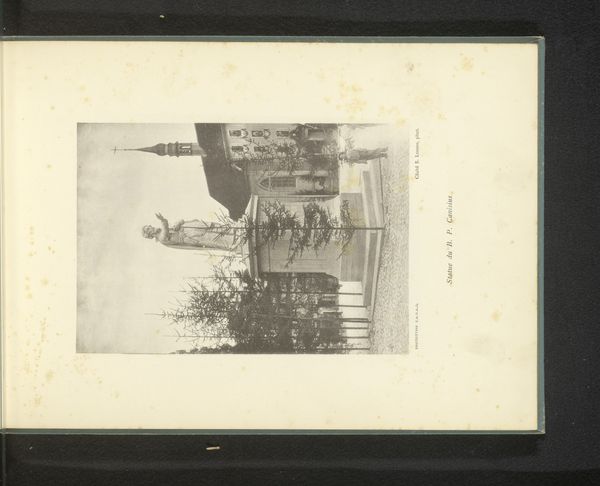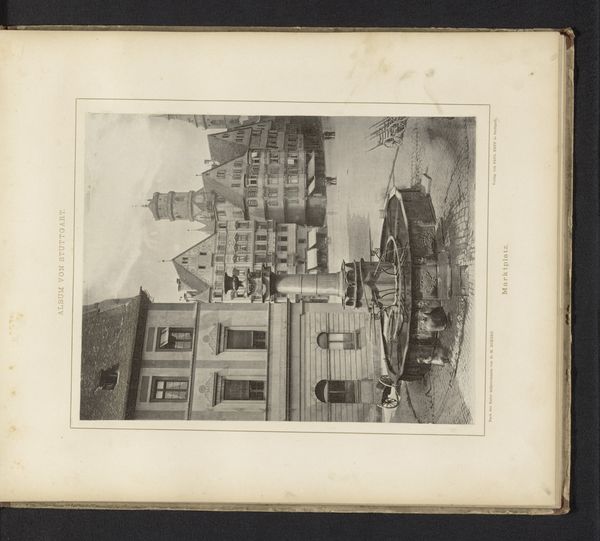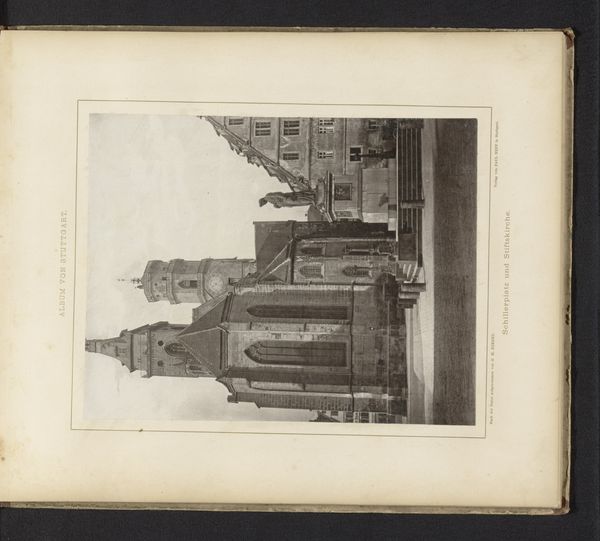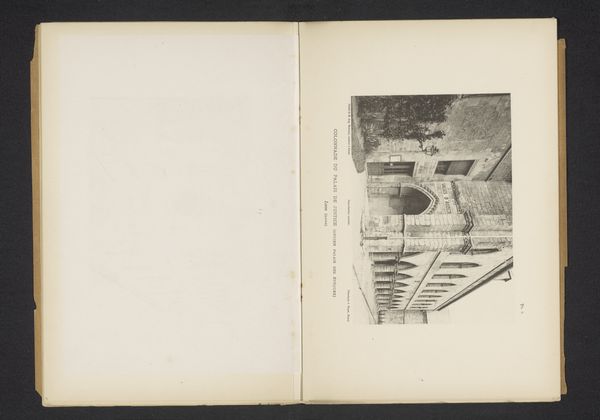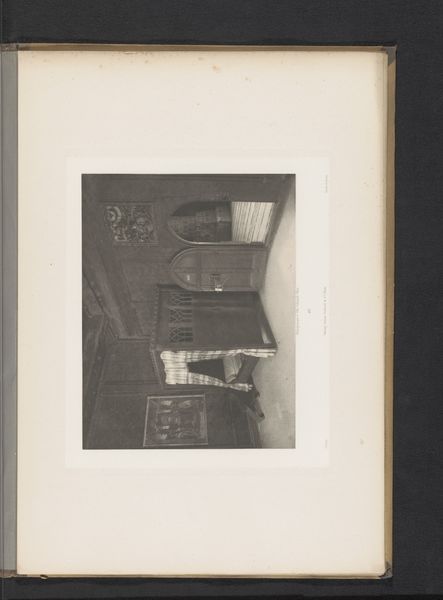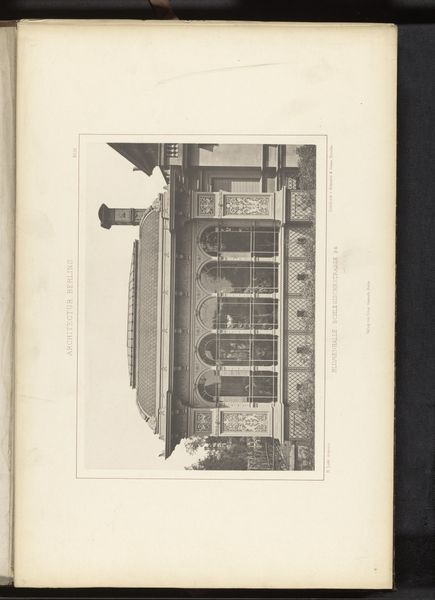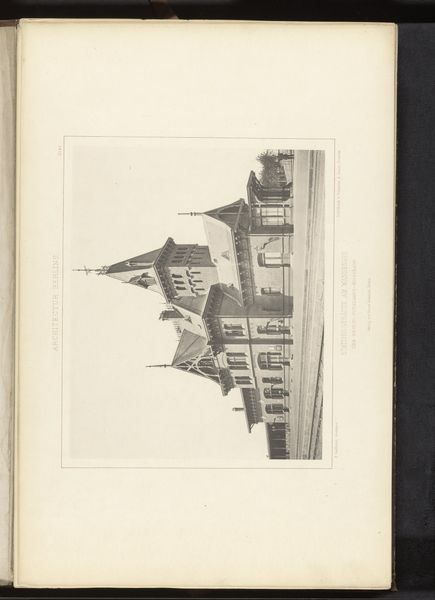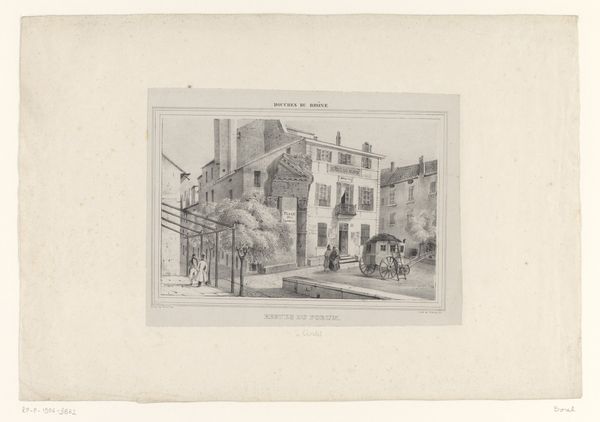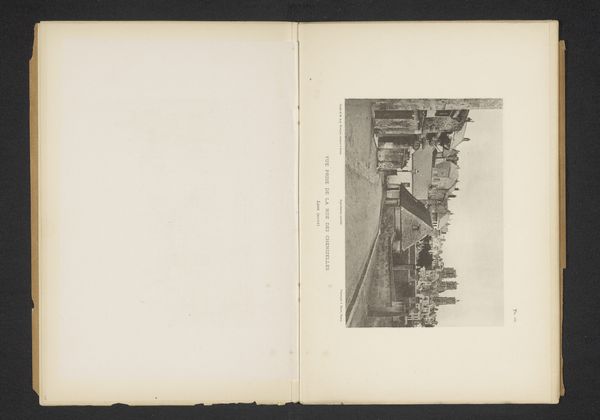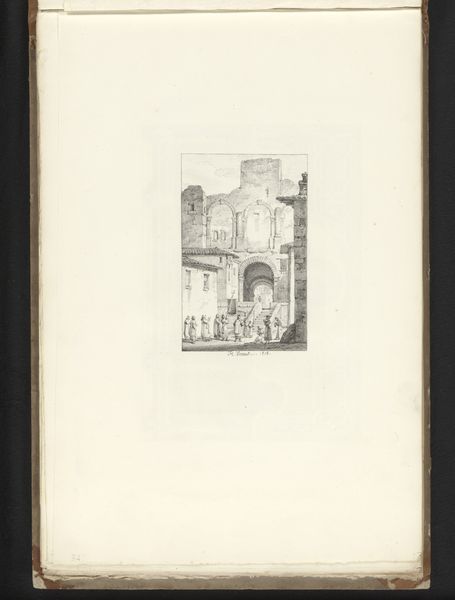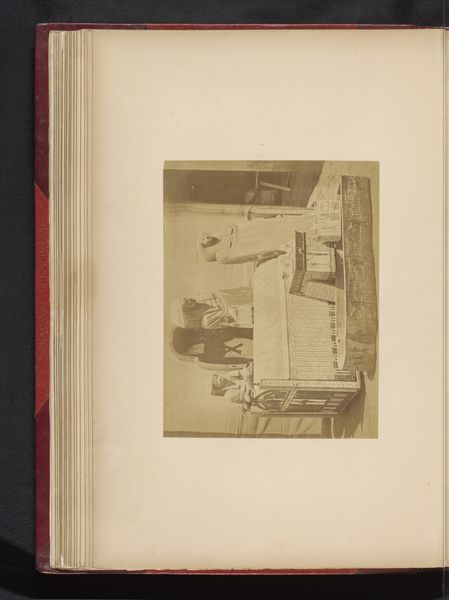
#
statue
#
aged paper
#
homemade paper
#
paper non-digital material
#
paperlike
#
sketch book
#
paper texture
#
personal sketchbook
#
sketchbook drawing
#
sketchbook art
#
design on paper
Dimensions: height 208 mm, width 150 mm
Copyright: Rijks Museum: Open Domain
Curator: Here we have what seems to be a photograph mounted on aged paper, predating 1872, depicting the "Monument voor Johannes Gutenberg te Mainz" crafted by B. Erdmann. It's fascinating, isn't it? Editor: It has an austere quality to it. Very... grey, solemn. A bit like looking back at a faded memory of civic pride. The texture of the paper and the monochrome add to that sense of historical distance. Curator: Indeed. Gutenberg stands there, immortalized, overlooking... well, I wonder what exactly? I imagine the town square bustling around him. This photograph feels so immediate yet distant all at once. He's the hero of accessible information and mass communications, even. The paper reminds me of something from a vintage scrapbook. Editor: Accessible to whom, though, right? In the context of the nineteenth century, monuments like this can be interpreted as assertions of power structures, particularly in a rapidly industrializing society. Gutenberg represents literacy, yes, but literacy and access to information were tools selectively distributed. Curator: Good point! It brings in an entirely new aspect that I, of course, failed to see on my first impressions. What do you mean by 'rapidly industrializing society?' Editor: Mainz, in the mid-19th century, was experiencing industrial growth. The monument then symbolizes progress, but one tethered to the established social order. The metal fence around it feels telling—celebrating Gutenberg, but also containing the impact of his invention within specific boundaries. Curator: Like knowledge needs its fences to stay "civil?" Do you think the photograph adds to or subtracts from the power of the monument? Editor: That's the million-dollar question, isn't it? A photo makes it more accessible but also less imposing. A kind of flattening of the grand gesture. Perhaps making it more vulnerable to critical inquiry, like we're doing right now. Curator: Absolutely. Maybe even a quiet invitation to rethink our heroes. Gutenberg's legacy isn't simple, and perhaps neither is Erdmann's rendering of it. This image does trigger many philosophical questions. Editor: Precisely! It really brings together an interesting reflection on both the promise and potential pitfalls that can emerge in these types of situations and their associated histories.
Comments
No comments
Be the first to comment and join the conversation on the ultimate creative platform.
